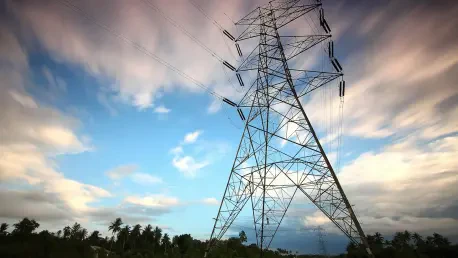

Introducing Christopher Hailstone, a distinguished expert in energy management, renewable energy, and electricity delivery, who has been a key figure in the field of utilities, grid reliability, and security. As Maryland institutes a law demanding that electric utilities disclose their voting

California faces a challenging fiscal scenario as Governor Gavin Newsom calls for budget cuts amounting to $423 million targeting essential energy grid programs. These reductions are slated for his revised budget plan spanning from 2025 to 2026. They come amid a $12 billion budget shortfall and aim

Georgia-Pacific's move towards revolutionizing the recycling industry through paper cup recycling initiatives is noteworthy. This expanding capability to incorporate polycoated paper cups in their recycling processes marks a significant advancement, addressing previous industry challenges presented

In an era where community dynamics are rapidly evolving, Charlottesville, Virginia, stands as an example of effective city governance that prioritizes safety, community engagement, and sustainability. As numerous updates from the city illustrate, this approach is not merely aspirational but deeply

Efforts to reduce food waste have gained momentum in recent years, particularly at the state level in the United States. As states grapple with environmental, economic, and social challenges posed by food waste, new policies aim to create a significant impact in tackling these issues. Many open

The United States Environmental Protection Agency (EPA) has recently announced new measures aimed at addressing the nation's growing concern over Per- and Polyfluoroalkyl substances (PFAS). Known for their persistent nature and potential health risks, PFAS have become a significant environmental

In recent years, illegal dumping has become a pervasive issue affecting communities nationwide, impacting not only environmental health but also local economies and public safety. Victorville, a city grappling with this challenge, has implemented a strategic initiative aimed at streamlining waste

The environmental services sector in New England is undergoing significant consolidation, presenting a unique challenge for smaller entities striving to maintain their foothold. Amidst this shifting landscape, Boston Green Environmental Services has successfully expanded its reach, demonstrating

How can a small town lead a composting revolution that captures attention and prompts change? In a pioneering move, Vermont’s Windham Solid Waste Management District has elevated its composting capabilities with groundbreaking upgrades. The facility in Brattleboro doubles its capacity, redefining

Mass Save, Massachusetts' energy efficiency beacon, now grapples with a $500 million budget cut mandated by the Department of Public Utilities (DPU). This significant financial adjustment sent ripples across the utility landscape, prompting companies like Eversource and National Grid to devise new
ITCurated uses cookies to personalize your experience on our website. By continuing to use this site, you agree to our Cookie Policy